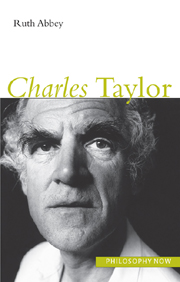1 - Explaining morality
Summary
Introduction
This chapter and the next are premised on a rather artificial division between Taylor's moral theory and his account of selfhood. This division is artificial because, as both chapters show, Taylor's view of the self is closely connected with his analysis of moral life and vice versa. Their close connection is posited very early in Sources of the Self; at the end of its first paragraph we read that “Selfhood and the good, … or selfhood and morality, turn out to be inextricably intertwined themes” (Taylor 1989a: 3; cf. x, 33, 41, 105). So in these first two chapters, I am trying to disentangle themes that resist separation.
In this chapter's presentation of Taylor's moral theory, the focus is on what he takes to be the universal or permanent features of moral life. A major part of the account in Chapter 2 of his views on selfhood traces the shifts that he posits in conceptions of the self from the ancient to the modern western world. This distinction between things that change and those that stay the same in Taylor's depiction of identity and moral life corresponds loosely with the structure of Sources of the Self. In Part I of that work, Taylor identifies what he takes to be the permanent structures of moral life, while from Parts II to V he charts the changing notions of the self from Plato to postmodernism.
So notwithstanding his sensitivity to historical changes in notions of the self that have a powerful influence on the sort of goods valued by individuals and societies, Taylor does not think that ethics is history “all the way down”.
- Type
- Chapter
- Information
- Charles Taylor , pp. 9 - 54Publisher: Acumen PublishingPrint publication year: 2000



